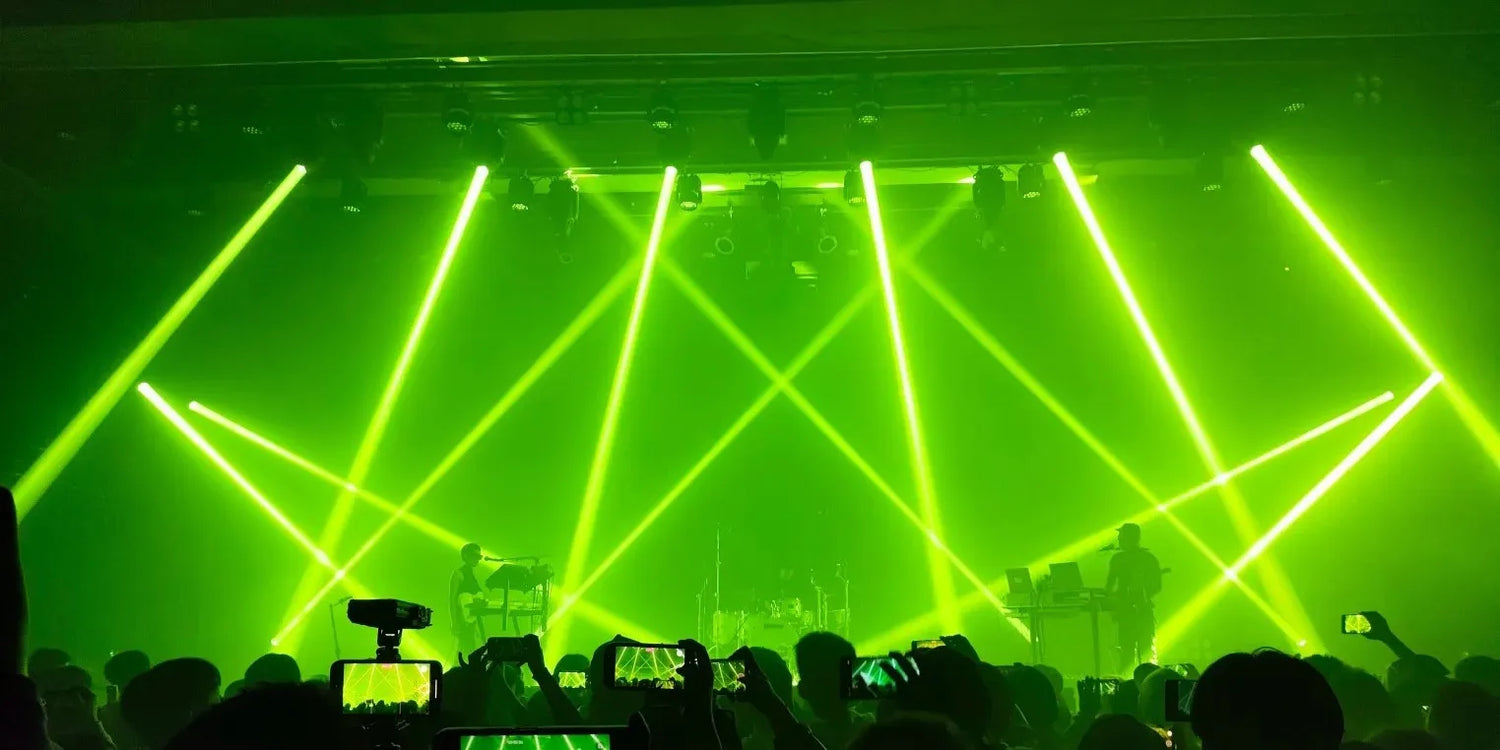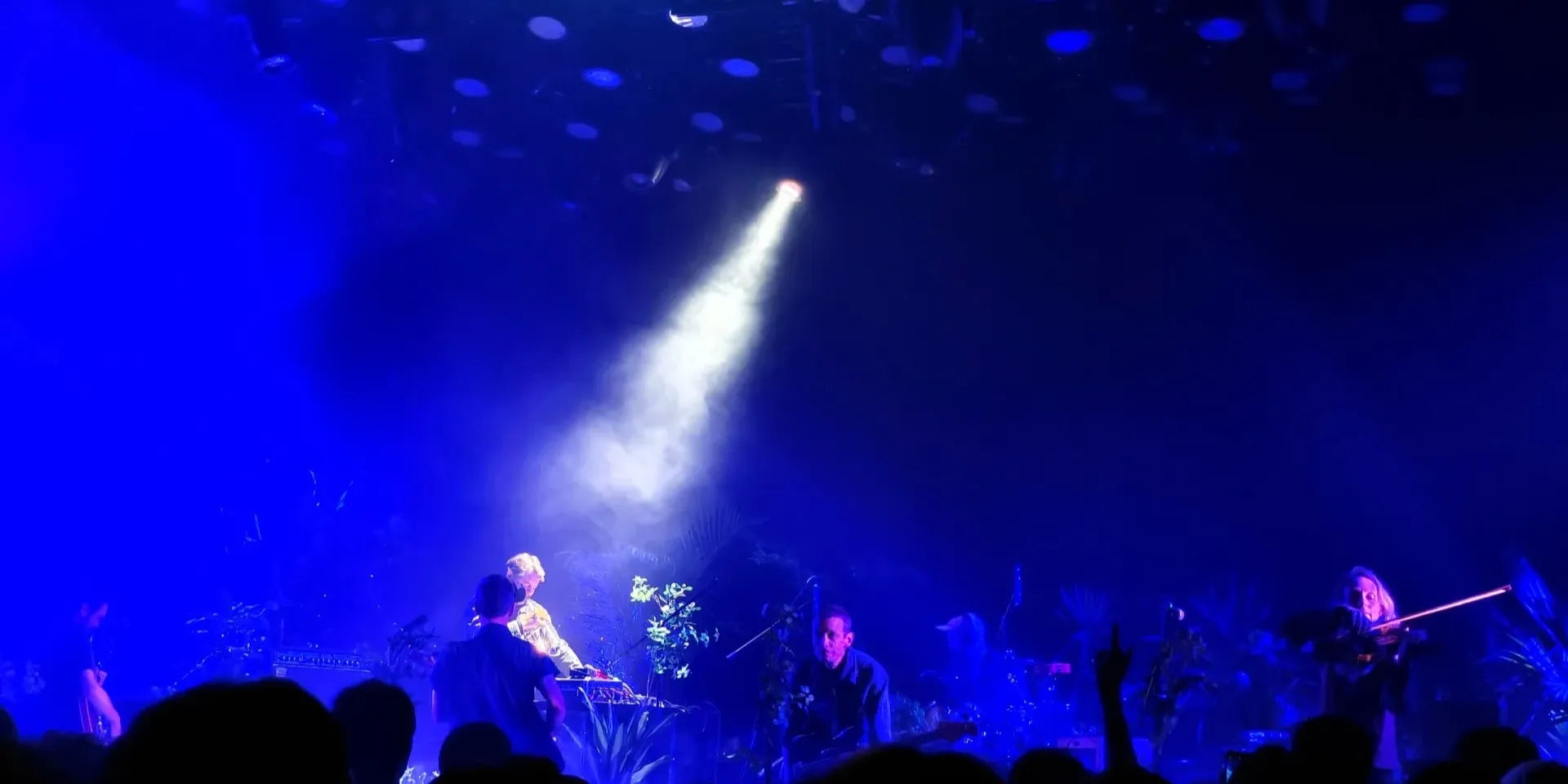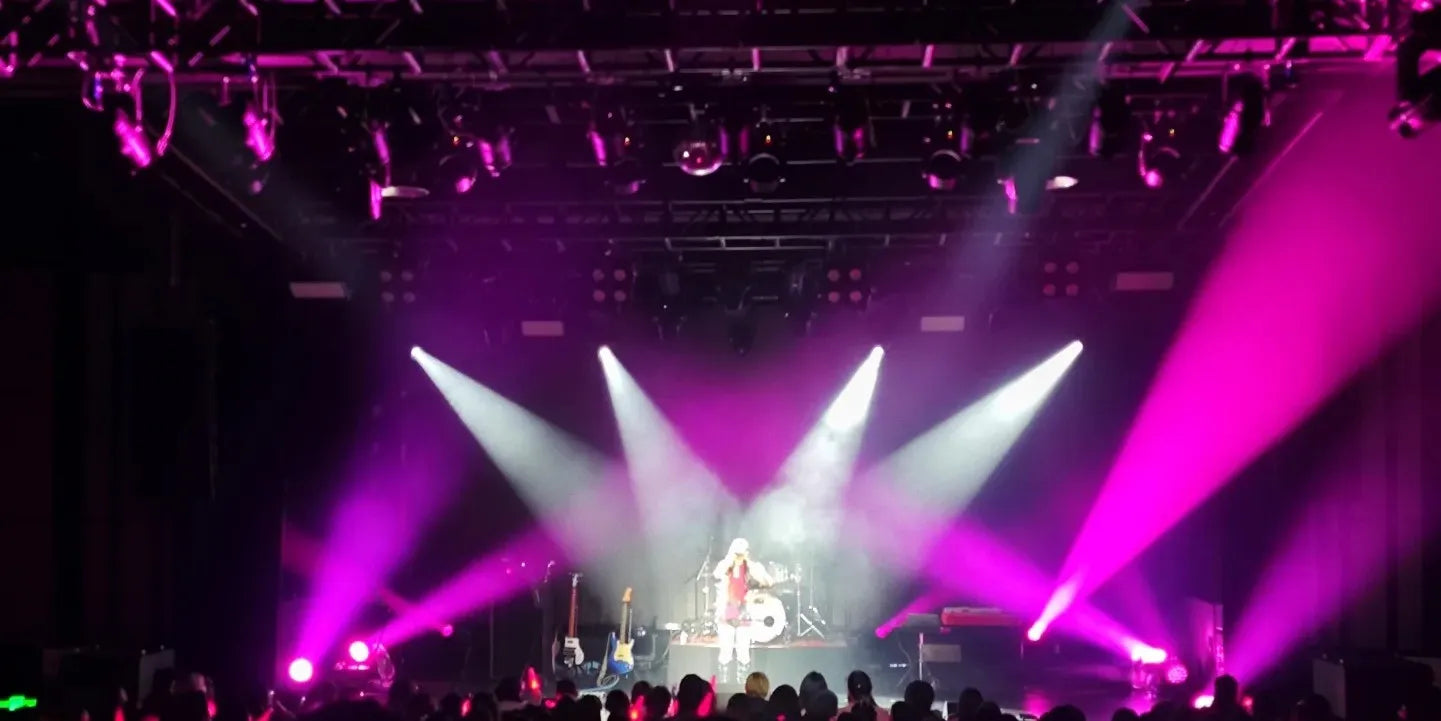Stage lighting is more than just turning on a few fixtures — it’s about creating an atmosphere, guiding attention, and elevating every performance. If you’re just getting started, understanding the basic lighting vocabulary will give you a solid foundation to plan and control your setup.
In this article, we’ll explain 12 key stage lighting terms — from fixture and beam angle to color temperature and dimming. These concepts will help you communicate clearly, design smarter, and build a professional lighting rig with ease.
Why Learning Lighting Terms Matters
Stage lighting is more than just pointing a spotlight — it’s about creating atmosphere, directing attention, and enhancing every performance.
For DJs, event planners, theater technicians, and lighting enthusiasts, knowing the right terms makes everything easier:
- Communicate clearly with lighting pros and crew
- Understand product specs before purchasing
- Control and program your lights more effectively
If you’re new to stage lighting, this guide will give you the essential vocabulary to get started — and sound like a pro.
Fixture
A fixture is a single lighting unit, such as a moving head, PAR can, strobe, bar light, or blinder. Each fixture has its own functions (color mixing, dimming, movement, etc.) and can be controlled individually or in groups.
Fixtures are the foundation of any lighting setup. Understanding fixture types helps you plan your rig and choose the right light for each effect.
Beam Angle
Beam angle defines how wide the light spreads from the fixture.
- Narrow beam (2°–10°): focused, sharp light.
- Wide beam (25°–60°): soft, wide coverage.
Beam angle determines the visual style of your lighting. Narrow beams create punchy aerial looks, while wide beams give smooth stage coverage.
Lux and Lumen
- Lumen (lm): total light output.
- Lux (lx): brightness on a surface at a certain distance.
A fixture with high lumens may still look dim if placed too far away. Lux shows you real usable brightness on stage.
Color Mixing
Modern stage lights use different LED combinations to create colors:
- RGBW = Red, Green, Blue, White
- RGBA = adds Amber for warm tones
- RGBAL = adds Lime for richer output
Better color mixing means more flexibility in creating moods and matching different event types.

Gobo
A gobo is a metal or glass template inside a fixture that shapes the light into patterns such as stars, textures, or logos.
- Fixed gobo = static pattern
- Rotating gobo = moving pattern
Gobos create unique visual effects without adding more fixtures.
Prism
A prism splits a single beam into multiple beams.
- Common types: 3-facet and 8-facet
- Expands the visual impact without adding more fixtures
Prisms create a wider and more dynamic lighting effect, especially when combined with gobos and zoom.
DMX512
DMX512 is the international standard control protocol for stage lighting.
- Each fixture has a DMX start address and multiple channels
- Channels correspond to functions like color, dimming, movement, and effects
- One controller can manage multiple fixtures simultaneously
Master–Slave Mode
In this mode, one fixture acts as the master and the others follow its behavior automatically.
- No DMX controller required
- Ideal for small setups, mobile DJs, and quick installations
- Ensures synchronized lighting effects with minimal effort
Auto / Sound Mode
- Auto Mode: runs built-in lighting programs.
- Sound Mode: reacts to music using an internal microphone.
This is a simple plug-and-play way to run lighting effects without programming — perfect for weddings, parties, and DJ performances.
Truss
A truss is an aluminum structure used to safely mount and support lighting fixtures.
- Strong and lightweight
- Allows flexible fixture positioning
- Ensures structural safety and stability
Trusses are a core part of professional stage installations.
Color Temperature
Color temperature, measured in Kelvin (K), defines how warm or cool a light looks.
- 2700K–3200K: Warm white (soft, cozy, yellow/orange tone)
- 4000K–5000K: Neutral white (balanced and natural)
- 5600K+: Cool white/blue tone (clean, sharp, modern)
Color temperature affects the mood of the scene — warm tones create a welcoming feel, while cooler tones deliver a crisp, modern look.
Dimming
Dimming controls the brightness level of a light fixture.
- Allows smooth transitions from 0% to 100% brightness
- Often uses 8-bit or 32-bit precision for fine control
- A key tool for building atmosphere, timing cues, and dynamic changes
Dimming is essential in both dramatic and live show environments to match the energy and mood of each moment.
Final Thoughts: Speak the Language of Light
Once you master these 12 essential stage lighting terms, you’ll understand product specs more clearly, program your shows with confidence, and communicate like a pro with other techs and designers.
What’s next:
Part 2: Advanced Lighting Terms — Zoom, Frost, Pixel Mapping & More
Part 3: Lighting Angles & Positioning for Real Shows
👉 Explore professional moving heads, wash lights, and hybrid fixtures at Betopper
and bring these terms to life on your own stage.






コメントを残してください
全てのコメントは、掲載前にモデレートされます
このサイトはhCaptchaによって保護されており、hCaptchaプライバシーポリシーおよび利用規約が適用されます。